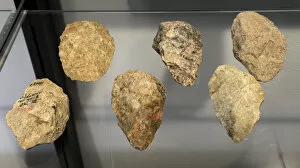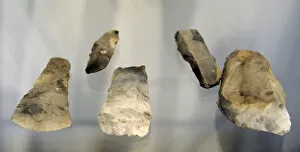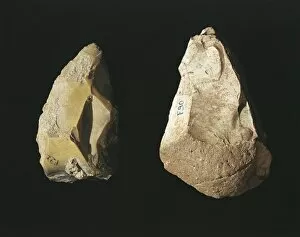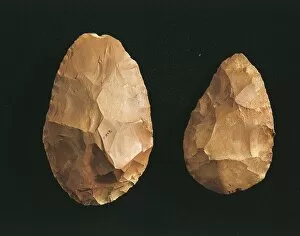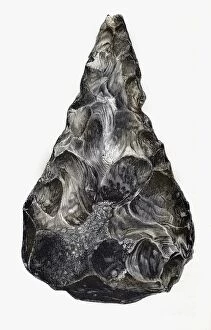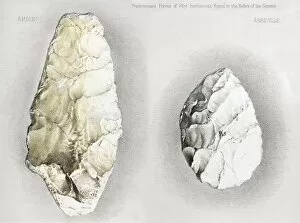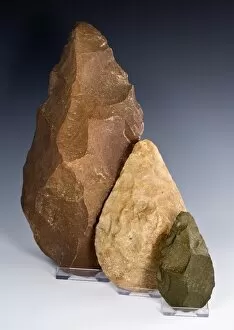Biface Collection
"Biface: Ancient Stone Tools Unveiling the Prehistoric Past" Step back in time to Lower Paleolithic Spain
All Professionally Made to Order for Quick Shipping
"Biface: Ancient Stone Tools Unveiling the Prehistoric Past" Step back in time to Lower Paleolithic Spain, where cleaver flints were meticulously crafted into biface tools. These versatile hand axes, belonging to the Acheulian Culture dating from 1500000-200000 BC, showcase the ingenuity of our early human ancestors. Traveling further north to France, a remarkable hand axe discovered in St. Acheul, Somme, Amiens takes us even deeper into history around c. 200 000 BC. Carved from stone during the Paleolithic era, this artifact provides invaluable insights into our distant past. Venturing across continents and millennia brings us to another intriguing find - a stone tool from the Lower Paleolithic period (30. 000 -10. 000 BC). This flint biface serves as a testament to human adaptability and survival skills during this era. As we delve into later periods such as the Maglemosian Culture (9500-6500 BC), we encounter exquisite flint handaxes that exhibit refined craftsmanship and technological advancements. The Middle Paleolithic or Mousterian epoch introduces us to quartzite cleavers and bifaces that demonstrate an evolution in tool-making techniques over time. One cannot overlook the significance of Acheulean Hand Axes which played a pivotal role in shaping ancient societies between 400, 000-350, 000 BC; these stones hold stories of resourcefulness and resilience etched within their very cores. Journeying through different regions reveals diverse variations of bifaces - from Marche Region's stone tools showcasing local craftsmanship to Kenya's paleolithic treasures unveiling Africa's rich prehistory. Even Italy has its own contribution with flint bifaces discovered in Colombare di Negrar (province of Verona), shedding light on humanity's presence throughout various corners of Europe.



